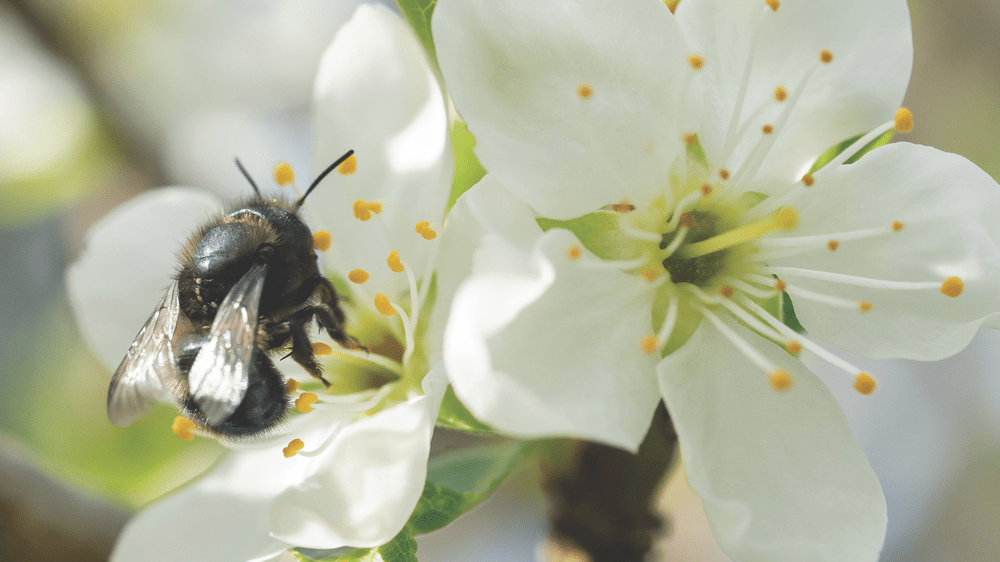Spring is an important time for bees who are emerging from the ground looking for pollen. Today, make plans to learn more about bees, plant native flowers to attract bees, and build a bee box —a home for solitary bees (they rarely sting because they aren’t defending a hive) to make their nests in your yard and stay busy pollinating your flowers and vegetables all summer long.
There are more than 400 species of native bees in Canada. Canada’s native bees are divided into six families, encompassing the familiar bumblebees and mason bees and the lesser-known carpenter, cuckoo, leafcutter, mining, plasterer, sweat bees and more. Native bees provide a very important service in our ecosystem in the following ways:
- Many of the food crops and flowers we rely on benefit from our native bee pollination.
- Bees transfer large amounts of pollen between flowering plants, doing their job to pollinate flowers that lead to great harvests.
- About half of the world’s plant species depend upon animals, like bees, bugs and butterflies, for pollination.
- Some plants require a specific native bee for proper pollination. For example, tomatoes can only be effectively pollinated by Bumblebees, and apples are most effectively pollinated by Mason Bees.
Learn more about native bees and their habitat here.
How to attract beneficial bees:
By following these tips, you can create an attractive and welcoming environment for bees.
Plant bee-friendly flowers. Planting flowers that are rich in nectar and pollen is one of the easiest ways to attract bees to your garden. Bees are particularly attracted to blue, purple, and yellow flowers such as lavender, sunflowers, and cosmos. Here are 7 flowers that attract bees. When you are planning your garden, plant your flowers in groups. Planting your flowers in groups can make it easier for bees to find them. They are attracted to areas with a high density of flowers.
Create a nesting habitat. Some species of bees nest in the ground or in hollow stems. Creating a habitat for them can encourage them to stay in your garden. You can leave some areas of bare ground or create shelter for native bees and make a bee box.
Provide water. Bees need water to drink and to cool their hives. Providing a shallow dish of water with some rocks or twigs for them to land on can be very helpful.
Avoid pesticides. Pesticides can be harmful to bees and other pollinators.
It’s time to take action & live sustainably. Let’s start by taking care of our smallest friends first.













